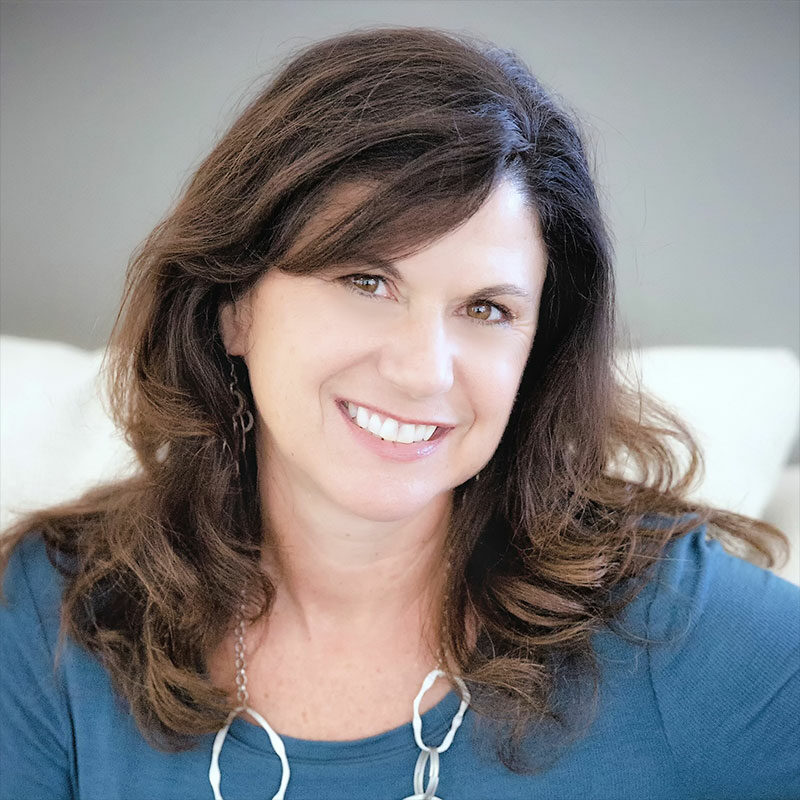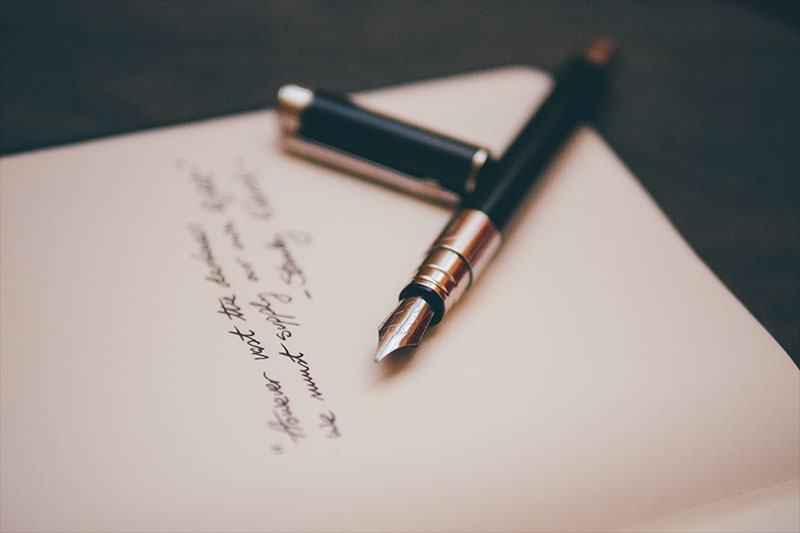What’s the Story on Backstory?
One of the biggest challenges for novelists—new and seasoned alike—is avoiding too much backstory in the opening of the book. A lot of people ask me questions about backstory, and often argue with me about it. So I wanted to give you some tips here.
Backstory usually refers to narrative that tells something about a character’s past. It’s given in an informational style without real-time action or dialogue. Backstory doesn’t show, it tells, thereby risking losing the reader’s interest.
Here’s an example:
Stacy Clarke rounded the end of the canned food aisle and brought her cart to a halt, barely avoiding slamming into the six-foot hottie organizing the Cheez-Its display. He glanced at her and smiled, shaking his longish bangs away from his eyes. She lowered her eyes and mumbled as she maneuvered around him. Ugh. Another opportunity blown. Why was she always such a dork?
Stacy had worked at this supermarket for two years before she’d quit to take her current job as a receptionist. She’d always been shy, and the guys had stopped trying to get her attention once they realized she wasn’t responding. It had been five long years since she’d had a boyfriend, and she was tired of being lonely.
Obviously I made this up, but it’s a close approximation of something I see all the time. Look at the second paragraph. It took us totally away from the current place and time. It took us away from the action – in fact, it stopped the action in its tracks. It’s backstory.
Usually when backstory isn’t working, it’s because it isn’t artfully done, and there’s too much of it in one place. When there’s a whole paragraph, or a page or more of backstory, we call this an info-dump.
A hundred years ago, or even fifty or thirty years ago, it wasn’t uncommon for authors to spend pages on backstory. Books (like life) moved at a slower pace. Characters could be introduced slowly and the story could take several chapters to get started. But that was then, and this is now. Today we have little tolerance for anything that slows down the forward momentum of the story. This is one of the biggest reasons that too much backstory is perceived as a negative in novels of today.
When you’re bringing your reader into the world of your novel, you’re trying to engage their senses and their emotions right away to get them involved in the story. You need to make an emotional connection with the reader as quickly as possible. The way to do that is in the here and now, the action and dialogue taking place in the present time. It’s highly unlikely you’ll make an emotional connection through backstory.
If you look at the bad-writing example above, it becomes clear that all the information in that second paragraph could easily be integrated into the story in a way that shows us Stacy’s background. As written, we learn information but we don’t engage with her. If we were at all interested in her after the first paragraph, it’s likely our interest has faded by the end of the second.
There are ways to bring the backstory into the book, and the key is to do it slowly. Think about giving just enough information to illuminate one tiny aspect of your character at a time. Place your characters in situations, let them react, and let your reader wonder how they got there and why they reacted that way. You want to be strategic, almost cunning, in the way that you let little bits of information from the past appear on the page. Use those pieces of backstory to slowly and carefully flesh out that character, never giving away too much, always leaving the reader guessing a little.
That’s one of the things that keeps readers going—when they’re asking themselves questions about your character. They want to know more and so they become engaged in the story. If you try to feed them all the information they could possibly need right up front, readers aren’t experiencing that desire for more. You could lose them.
Think of backstory as a precious commodity of which you are the guardian. You will release it on a need-to-know basis. Only give the reader what they need for that moment of the story, just little bits here and there. Be stingy with it. Keep the forward momentum of the story going.
Writers often want to put backstory in because they’re convinced the reader will need to know this information “later.” Ironically, information conveyed in a narrative format that doesn’t engage the reader’s emotions has a good chance of not being remembered later when the information is important. So it backfires on you. Don’t try to include a ton of backstory in the beginning of your novel.
I know some people are still unclear on exactly what we mean by backstory. If you write a scene (with action, dialogue and location) that takes place in the past, then it’s not backstory, it’s a flashback. There’s another whole set of guidelines and tips and conventions for flashbacks; but for now, just realize that when we say backstory, we’re not talking about flashbacks.
Literary agent and writing teacher Donald Maass challenges writers to avoid backstory in the first fifty pages of a novel. I don’t advocate a complete zero-tolerance policy; when handled well, small amounts of backstory can add depth and interest to a story. But I think it’s a good goal. It’s great practice to work on writing your story in the present. Work on showing the reader what you need them to know about your characters through their present day action rather than telling them about the past.
This whole discussion about backstory is not about “rules.” It’s not arbitrary, and it’s not about trying to get writers to conform or jump through hoops. It’s simply to give you one more tool for figuring out how to make your story the best it can be. Vibrant, engaging writing is usually immediate. Backstory is not. So use this knowledge where it fits, throw it out where it doesn’t. And keep writing the best story you can.
Where are you with backstory? Do you struggle with it? Why do you think it’s hard to write a novel without so much backstory?
If you haven’t yet, drop by my Facebook page and click “Like.”
www.facebook.com/agent.rachelle
© 2011 Rachelle Gardner, Literary Agent









StantonCorine, get lost!
Don’t you recognize that it is high time to get the loans, which will realize your dreams.
I agree with most of what you have said. I don’t read much of the backstory if it is presented as telling, unless it is included in dialog in an interesting way. I try to include bits of backstory into my dialog as it seems important. When I am reading someone else’s work, I will usually skip over paragraphs that offer nothing but backstory, but perhaps mark them with a highlighter so I can find them easily when I return to learn what I need to know to understand the character. But wouldn’t that be so much better if we didn’t have to search back through the novel to find that tidbit of knowledge about the character’s past? Better to offer it at a later point, when we actually need to know. I like having some mystery in my characters, especially in the beginning, when I’m struggling to keep the reader’s interest. Dialog, especially that with some conflict, offers just the right amount of backstory when offered in minute amounts. I often use this dialog at the end of a chapter, with a hook to make the reader want to read the next chapter to find out more.
Hey! It works for me.!
>What if you're writing in the first person? Interior dialogue, reminiscing, reliving the past. Is this backstory?
>What about flash-forwards? I basically begin with one of those (my first chapter) and then drop back 12 years and work straight forward to the dramatic event in chapter one. Most of my readers have had no problem, but I can imagine some readers would be thrown by this.
The distinction between flashbacks and backstory is very helpful, though! I am not doing infodumps or telling backstory – if you consider the story as beginning with chapter one, I'm doing a long flashback. It's a relief to me to know the difference; I never did before. So – great post!
>I recently went in the opposite direction. I hadn't included enough back story, and my readers weren't getting enough of a sense of the characters. I had to go back and read some current books in my genre to convince myself that adding more backstory was okay. Ended up blogging about it
>Love your example, Rachelle. (Waiting for you to write a novel, in your abundant spare time!)
The answer to this backstory problem seems obvious–dialog. He asks her for limes or fresher tomatoes (depending whether he's making cocktails or a gourmet meal.)
He says, "Been working here long?"
She says, "Couple of months."
"You like it?"
"It's OK."
"So what were you doing before?"
"Receptionist."
Problem solved!
Wish it was all this easy!
>I was, not 5 minutes ago, reading comments from a critique I received and wondering about how to insert the backstory of my character. Thank you for reposting this so I wouldn't spend hours researching to find such valuable advice!
>Rachelle,
I appreciate this article, but it continues to puzzle me when I see current, highly acclaimed books that do contain substantial amounts of backstory.
Take for example the NYT Bestseller, HOTEL ON THE CORNER OF BITTER AND SWEET. The story begins the first two pages with backstory. The first paragraph is in present time and the next eight paragraphs are backstory.
And yet, this is a beautiful and compelling novel. I could give other examples both within this book and other books.
Could you comment on that in light of your blog article? I am really curious how the position you describe (I hear it from others) is continually challenged by real world author successes. thank you. Your opinion is highly valued.
>I think backstory is a useful tool at the first draft stage when the writer's still getting to know her characters. It can be cut right back in later drafts.
>Thanks for the clarification. I'm woefully flashbacky.
>@Melissa,
I think that's because writers take these rules too seriously. A little back story sprinkled in so that the reader has a clue what is going on is not going to kill their reading experience. Authors need to do some telling.
It's when writers become excessive that the book doesn't connect for me. I want to learn a little bit about the character without having to figure everything out from what is being shown to me, especially when I'm reading before bed. I'm just too tired to want to exert the effort to figure everything out.
Somethings I don't need to be shown. Likewise, a passive sentence every so often is not going to destroy my reading experience either.
Learn the rules and take to heart moderation.
>I am so torn on this issue, Rachelle. I like more backstory than the average reader. A lot of books I’ve been reading feel too “hook-ish,” as though they’re trying to hard to draw me in, and they skimp on backstory. This doesn’t work, because I don’t know enough about the characters to care about them. And while I agree with Mr. Maass on a lot of things, if I don’t get a certain “vibe” from my characters by the first 50 pages, I’m probably not going to finish the book.
Then there’s way too much backstory. I’m not going to kick up a fuss about a couple of paragraphs used judiciously. But I’ve been pulling some of the NYT best sellers lately, specifically single-title romance, and a couple of writers just hammer out that backstory like there’s no tomorrow. And I mean pages and pages and pages of “tell” with nothing else going on – how on earth did they get away with that? ☺
>Thanks for the post. I'm trying to work on this, especially because my whole story is a fantasy that's about the protaganist's backstory, and how it interacts with her kingdom's secrets. I don't want to give secrets too late or too soon. Like Susan Anne Mason said, it's a juggling act!
>Thank you for this. While I don't mind flashbacks early on (provided they're done well), endless backstory before the actual story has even begun will make me slam a book shut and reach for another. Tell me the story already!
And I've used the word "story" way too many times, but that's another topic entirely.
>I completely agree, Rachelle! Seems to me that a lot of the major "sensation" stories recently (Twilight, say, or the Sookie Stackhouse novels)have been driven by a strong plot and main character, and that these elements were the primary focus of the writers over flawless technique. (Not to say that these authors are bad. There's just a distinct different between their styles and more literary styles.) Give readers a strong plot, and they'll forgive a lot more when it comes to technique.
>I agree with James Scott Bell. Admittedly, I don't want to read pages upon pages of backstory – no matter where in the book it is – but I find a few paragraphs in the beginning helpful to "picturing the person" in my mind's eye.
For example: Right now I'm over half-done with a novel and I have no clue as to what the two leading characters even look like…other than they're both tall.
But tall is subjective; in other words, they may as well be 5-footers in a land of leprechauns for all I know.
Yes, there is a fine line between too much and too little backstory but I need some…and, as an author, I provide some. Immediately.
>I tend to find that when I am writing things that further the plot, they pour out of me and incorporate the necessary backstory. If I'm just plopping down some backstory, however, I tend to get stuck. I wonder how I'm going to get back to where I need to be. It's a great indicator that I've gone off track.
>The backstory in my WIP is pretty key since it sets the stage for where my MC and her cohorts are at when the story starts.
Still, I know my readers won't need to know everything that happened–even though I do. When it becomes relevant, I've added bits and pieces, even had a couple of very small flashbacks to help illustrate characters and give a glimpse into the past. I try very hard not to have more than I need at any given point in the book. I hope I've accomplished just that–especially since I think it's about ready to send out to agents.
>I have struggled with it. I'm learning though.
Thanks for reposting this.
>A certain amount of backstory in the beginning is actually essential to what I call "character bonding." If you have none of it, you miss a critical emotional element.
Two writers who have done it well their whole careers are Dean Koontz and Stephen King. And they've sold a few books, I think. This early character bonding is one of the reasons why.
Rachelle strikes the right balance between "zero tolerance" and backstory bloat. You can't really get a formula out that. It's a matter of feel. But it's definitely a matter worth feeling.
>Hi Rachelle,
I think I've swung too much the opposite way now – withholding too much information for too long!
Now I struggle with how much to keep secret and when to reveal the secret. Always a juggling act!
Cheers,
Susan
>Lady, you are legendary. This is invaluable. Without reminders I'd keep falling into the same pits… No reader (or writer) wants to dig their way out of that.
I can recall a novel by an author I love where the backstory turned into a 150pg flashback. The story eventually strengthened but if it had been penned by anyone else, I'd have left it for retirement. Gruelling stuff, but perhaps the present was introduced too soon?
In any case, show vs tell is a whole other niche. Can't wait. And yes, I've outgrown much of that old style with oodles of backstory.
>I'm a big fan of flashbacks as a method of giving a little history. But only if it lends itself to driving forward the story.
Thanks for giving me something to contemplate today!
>Thank you for this post! I'm currently writing a futuristic story (kind of dystopia, but more Sci-fi) and there's an awful lot of world building/backstory that's crucial to the story. My biggest problem is explaining enough so that people understand what's going on NOW, especially early on in the story. This post gave me a couple things to think about. Thanks again!
>I have trouble with not telling too much backstory. I just read a book that did it beautifully, Winter Garden by Kristin Hannah. Although I did not like her R rated scenes, I did like her plot style.
As a result of their father's death wish, the adult sisters begin to learn why her mother was so cold and distant. She tells of her childhood in occupied Russia. The story is told in bits, and I couldn't wait for the mother to tell more of the backstory.
It was VERY well done.
>Great comments, Aimee and Sra, and very helpful blog post, Rachelle. Loving the archives, and thinking that I'd better poke around in there!! Happy Vacationing!!!
>Aimee and Sra have it right: We pick up a book to read the story, not to read what happens before the story.
Thanks Rachelle, for reaching back into the archives to bring us this timely advice.
>I don't think it's contrary at all. Party because including backstory isn't so much a form choice as part of the storytelling. IE. Choosing what to include.
Also, I feel like the voice has nothing to do with the backstory at all.
It's like how I speak differently from my roommate. Sure, my grammar or vocabulary is undoubtedly affected by how and where I grew up, but the way I sound when I speak doesn't change just because you don't know where I'm from.
The voice is the way a person phrases words together, or how they react to a huge surprise, or that they think chocolate is evil. (Gasp)
You can see all that without knowing why they are that way. The why is the backstory, and that's what should be dispensed so carefully. It should be dispensed just as carefully as the real time action. Because, as I said, it's part of the storytelling.
Anyway, as for the post, yeah, I also have trouble with that. We aren't sure if something will be understandable without knowing certain things first. And since you know them, you can't just forget them and see if it works without the knowledge.
That's the hardest part for me. Trying to see it from the point of view of someone who doesn't know everything that I do.
The best way I ever heard it phrased was this: I don't remember where (it might have been on here) a blog recently said, they've never heard anyone pick up a book and say "I'm going to buy this because I can't wait to see what happens before it starts".
We pick up a book to read the story, not to read what happens before the story.
Sorry. That was really long. 🙂
>Brilliant post, as per usual. Thank you so much for reposting these.
>I think your blog post almost runs counter to your last one. Books that are too technically correct lose feeling.
I've seen writers cut out all their verbs to be. I've seen writers show nearly 100% when they could show 80% and cut the length of their manuscript down significantly.
It's easy to chase all these golden rules, but when I'm trying to get the voice down for a character, I need to tell a little bit about them to set them apart from everyone else, but I need to tell in a voice distinct to that character. It's easy to cut a little back story and end up editing out the voice of a piece.
>Excellent advice as always. And timely – as I'm rewriting the opening scenes of my novel and was wavering about a point which I now know to cut. Thanks!
>Going through the editing process with my agent showed me how crucial it is to drip-feed backstory. I also studied Dwight V. Swain's Techniques of the Selling Writer which gives practical advice at length.
In the end, it was reading through my favorite books with an eye for backstory and studying how they'd just placed little diamonds here and there that convinced me: The reader isn't interested until the information is relevant.